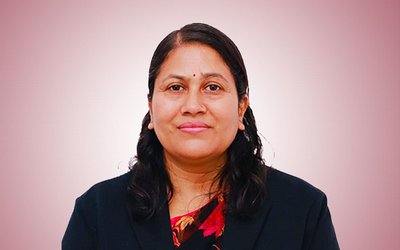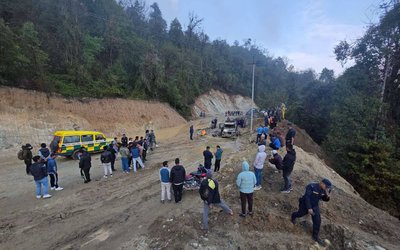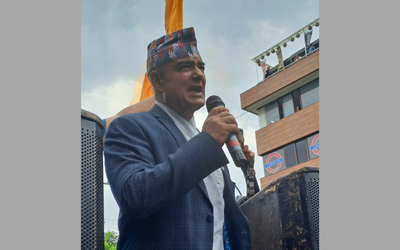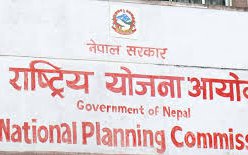
On April 19, U.S. Ambassador to Nepal Peter W. Bodde and the U.S. Mission staff joined Nepal’s Ministry of Health and Population Vitamin A campaign. Ambassador Bodde visited sites in greater Kathmandu where children were receiving Vitamin A drops.
The biannual program reaches 3.2 million children under the age of 5 and prevents an estimated 15,000-18,000 child deaths in Nepal.According to a press release of US Embassy, Vitamin A deficiency was once a severe health problem in Nepal. Two large, community-based trials financed by the United States Agency for International Development (USAID) in the 1980s found that child mortality could be reduced up to 30% through the distribution of Vitamin A to children aged 6 – 59 months.
Based on the results of these two trials, the National Vitamin A Program was developed and, since 1993, has been implemented by the Ministry of Health and Population with technical assistance from USAID.
This is not the first time ambassador Bodde was seen mingling with the people. Whether he beteaching in public higher secondary school of Lalitpur orsupporting the cultural preservation work of various historical sites, US Ambassador Peter Bodde gives priority to development activities in Nepal.
Besides his own busy diplomatic schedules, Ambassador Peter Bodde feels happy to get involved in the activities aimed at improving the livelihood of the poor people of Nepal. As Nepal has been passing through a crucial period of prolonged political instability, ambassador Bodde is visible doing something as part of one or the other development initiative.
Inspired by dedication and commitment of fellow American Citizens for the uplift of livelihood of Nepalese, ambassador Bodde has also been putting his efforts to institutionalize them.
“While trekking in Nepal, Olga Murray realized that she wanted to devote her life to improving education here. In 1990, Olga formed the Nepal Youth Foundation to organize and expand efforts on behalf of Nepali children. In almost 25 years of its existence, this foundation has impacted the lives of 45 thousand impoverished children in Nepal,” said said Bodde in his speech delivered in a reception hosted to celebrate U.S. Independence Day.
“Judith Chase began traveling all over Nepal in 1975, photographing and collecting traditional arts and documenting art techniques. Her collection of these artifacts forms the basis of a cultural heritage museum at Changu Narayan called the Living Traditions Museum. Judith and her husband Jim also founded the Everything Organic Nursery in the hills near Dhulikhel. This nursery is now teaching farmers how to grow new varieties of crops with export potential,” said ambassador Bodde.
“My friend James Giambrone has been protecting and promoting the traditional arts of the Newars for 34 years as the director of the Indigo Gallery. He has documented the work of one of Nepal’s great sculptors, Kuber Singh Shakya, and he has been an integral part in designing permanent exhibitions in the Patan Museum and the Living Traditions Museum at Changu Narayan.”
“Steve LeCler came to Nepal as a Peace Corps volunteer, and -- like many of those who serve in the Peace Corps in Nepal -- he returned -- and made improving health here his life’s work. His research into Vitamin A deficiency became the basis for the establishment of the Nepal National Vitamin A Program, which today is credited with saving the lives of 20 to 30 thousand children each year. This program is a major factor in reducing child mortality rates in Nepal.”
In his speech, Bodde recalled what President Abraham Lincoln once said, “Don't worry when you are not recognized, but strive to be worthy of recognition,” and added, “People like Olga, Steve, James, and Judith, and also Barbara Adams, Thomas Kelly, Miss Elizabeth Hawley and others here tonight have certainly demonstrated they are worthy of our recognition.”
Diplomats come and go but some are remembered for their commitment and dedication towards the host country. Outgoing US ambassador to Nepal Peter Bodde is one of them.
Since his arrival for the third assignment as an ambassador, Bodde spent most of his timemeeting with the grass root people and dedicated time to uplift their life.
In almost three decades of his career in US foreign service, outgoing US ambassador Peter Bodde spenta quarter of his assignment in Nepal in three different positions since 1982.
“I first came to Nepal in 1982. Since then, I’ve seen Nepal achieve remarkable development outcomes. Maternal and infant mortality is down. More girls are going to school than ever before. There is better road, hospital and school infrastructure. A monarchy was replaced with a federal republic committed to greater inclusiveness across all ethnic groups, regions, and castes.
“I have been incredibly lucky to witness Nepal’s development firsthand. Most of you know I’ve served in Nepal three different times. I had to work pretty hard to earn the opportunity to come back. I wanted to return to Nepal for a simple reason—my family and I experienced the famous Nepali warmth and hospitality. If you look around the event tonight, you will see I am not the only American who has felt this special kinship with Nepal. Many private American citizens have also spent their lives working side by side with Nepalis.”
As ambassador Bodde is leaving Nepal in June completing his ambassadorial tenure, these words are testimony of his love and passion to Nepal.
- TEACHERS ON STRIKE: Students' Future In Jeopardy
- Apr 25, 2025
- NEPAL-THAILAND: Joint Business Council
- Apr 13, 2025
- BIMSTEC SUMMIT: Nepal’s Stand
- Apr 11, 2025
- IME GROUP: Expands Into Paper Industry
- Mar 24, 2025
- CPN UML: Instigated By India
- Mar 23, 2025















